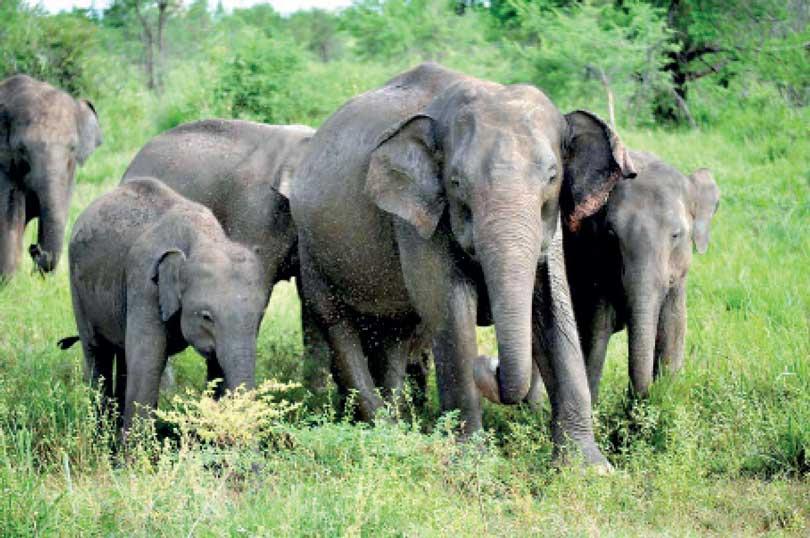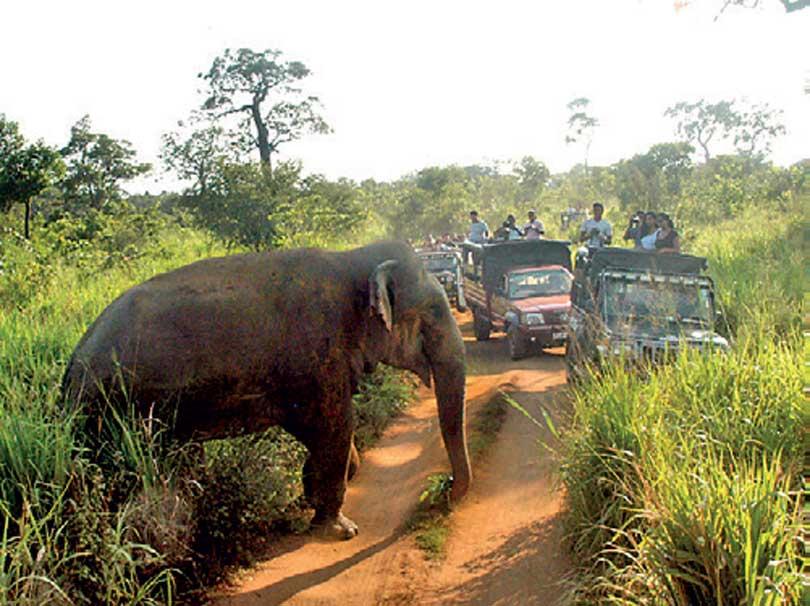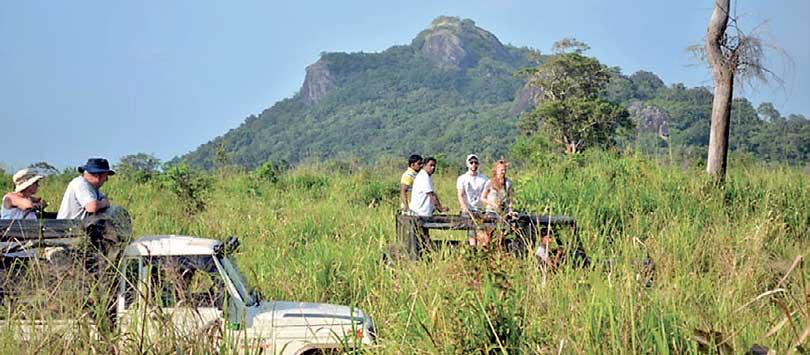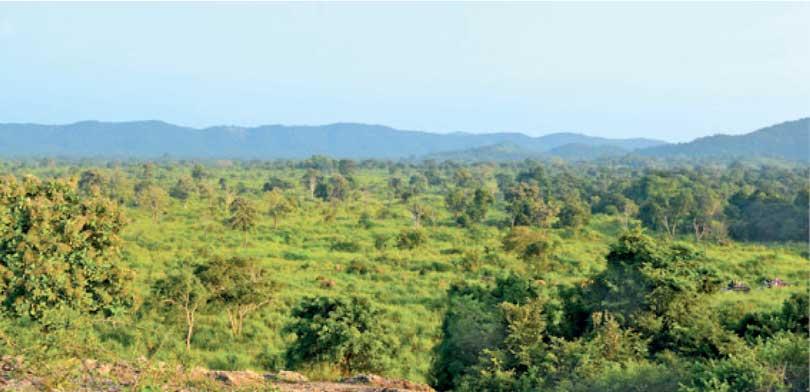30 Jul 2021 - {{hitsCtrl.values.hits}}

 Hurulu Forest Reserve of Sri Lanka was designated as a biosphere reserve in January 1977. The forest reserve is an important habitat of the Sri Lankan elephant, as it is located between Minneriya and Kalawewa National reserves. With the opening of National Parks after the island- wide lockdown, visitors to the National Parks are slowly visiting again but within the province, of course.
Hurulu Forest Reserve of Sri Lanka was designated as a biosphere reserve in January 1977. The forest reserve is an important habitat of the Sri Lankan elephant, as it is located between Minneriya and Kalawewa National reserves. With the opening of National Parks after the island- wide lockdown, visitors to the National Parks are slowly visiting again but within the province, of course.
Huruluwewa and Minneriya Parks have become the most popular destinations to watch the mass elephant transiting activity during the period of July, August and September. The North Central province of Sri Lanka is home to this mammoth wildlife event known as the ‘Gathering.’
During the dry season from June/July to October when the rivers dry up, the elephants are forced to travel to large reservoirs in Minneriya, Huruluwewa and Kaudulla to bathe, find drinking water and graze on fresh grass. Simply, it is known as ‘The Gathering’ or the annual congregation of the elephants.
Hurulu Forest Reserve represents Sri Lanka's dry-zone dry evergreen forests and attracts hundreds of wild elephants for water. There are many other protected areas situated around Hurulu Forest Reserve viz. Ritigala strict nature reserve, Minneriya-Girithale and Mahaweli flood plains nature reserves, Wasgamuwa National Park and Kahalla-Pallekele sanctuary. Carved out at the edge of the Hurulu Forest Reserve is the Hurulu Eco Park which offers popular jeep safaris.

Located 181 kms away from Colombo in the Habarana jungle, the edge of the Hurulu reservoir is the best known protected area in Hurulu Forest Reserve (Hurulu Eco Park). Before 1977, this area consisted of a huge teak plantation, but now it has transformed into a thick forest amidst the teak which are favourable to elephant habitat.
The park covers an area of 10,000 hectares, but there are plans for expansion. The area open to visitors is a drive of around 22 km from the Habarana end. There are four waterways that run through the park and their sources are streams that have sprung up and joined. Some are connected to the Hurulu wewa. A stretch of 1000 hectares of land in the reserve was declared open as an ‘Eco Park’ in 2007 by the Forest Department, as wildlife here is sustained through these waters.
The forest reserve contains Dry Monsoon Forest (Dry Mix Evergreen Forest) with a typically layered structure comprising an upper canopy of moderately large trees, a sub canopy of smaller pole-sized species and a distinct herb layer. The upper canopy is dense, about 15-20m height and interrupted by emergents of which Satin and Palu are typical. The sub canopy is characterized by species such as Korakaha, Kunumella, Weliwenna. The orchid Dendrobium Maccarthiae in bloom is a colourful sight during the August- September months.
Archaeological sites
Thalgedikanda is a forest hermitage adjacent to the forest. It is of archeological importance as several ruins of ancient buildings, caves, ponds, and monuments belonging to King Tissa’s reign is found here. The Katuvelgoda Raja Maha Viharaya also of historical importance, is located within the Archaeological boundaries.
Hurulu Forest Reserve can be reached through Habarana - Trincomalee main road entrance to Hurulu Eco Park on the left, passing the railway crossing of Habarana.


Pix by Shan Bandu
Weerasinghe
24 Nov 2024 59 minute ago
24 Nov 2024 2 hours ago
23 Nov 2024 23 Nov 2024
23 Nov 2024 23 Nov 2024
23 Nov 2024 23 Nov 2024